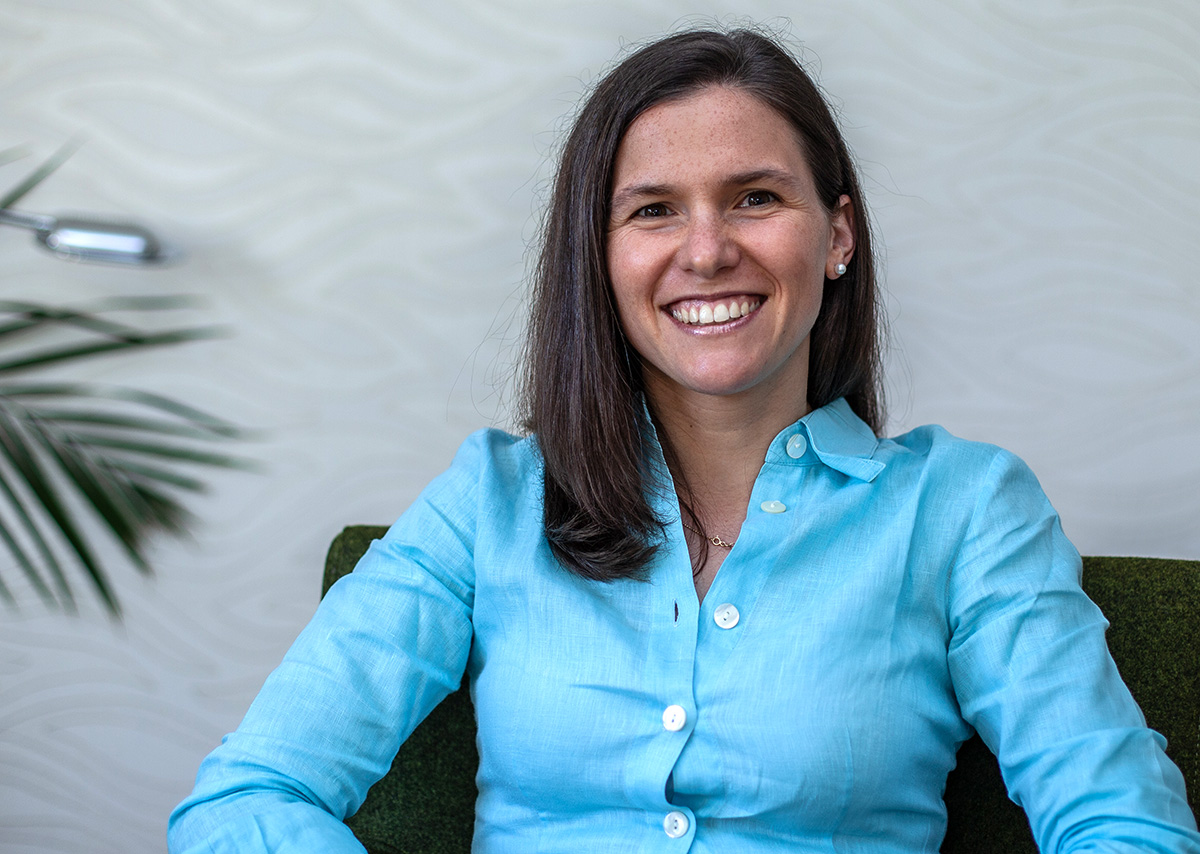How spaces and objects affect innovation work

Dr Marta Caccamo is a member of Media, Management and Transformation Centre (MMTC) at JIBS. She successfully defended her doctoral thesis 25 September, 2020. Photo: Private
Marta Caccamo’s dissertation looks at how spaces and objects, physical and digital, can affect the way people carry out innovation work. Her study shows that when designing an innovation space, one solution does not necessary fit all. Rather, organizations should look at what the project is, the types of people involved and the context they are working in.
Marta Caccamo is originally from Milan, Italy and has lived in several different countries before moving to Sweden, working in both academic and corporate settings in Asia and the EU. She developed a strong interest in how collaboration can be fostered when people have different backgrounds and perspectives when she worked in diverse teams in previous workplaces and study settings. In particular, she was fascinated by the role of objects, such as props and sketches, to promote or hinder collaboration. This, in combination with a personal interest in innovation settings, was the starting point of her dissertation.
‘’My dissertation focuses on the role of space and objects in collaborative innovation projects among actors with diverse backgrounds, skills, and expertise in knowledge-intensive endeavors”, says Marta Caccamo.
Three types of space
Some of the most interesting insights that her research has given Marta Caccamo is that the design of collaborative innovation spaces should strive to achieve three types of fit:
Space-ecosystem fit --> The design of innovation spaces should start with a deep reflection on the knowledge objectives expected from the space. Obtaining familiarity with the context is a fundamental step in determining whether the defined knowledge objective is in line with available resources. Studying the context includes considerations about geography and available resources. Once the objective has been defined and the ecosystem studied, the infrastructure should be designed to reflect the identity of the ecosystem and best leverage the available resources.
‘‘An example of this would be if you want to set up a space to foster timber innovation, then you should be close to the forest and in an area where there are companies working on similar issues’’, says Marta Caccamo
Space-stakeholder fit --> Innovation spaces typically have several stakeholders. Stakeholders can be divided into two main groups: direct and indirect users of the space. Direct users of innovation spaces involve collaborating actors, as well as managers and facilitators. Indirect users of the space include financers and external partners. Each of these stakeholders has different expectations from the space in terms of functionality, identity, and communication.
‘’For instance, you should consider the fact that if you are starting a space for biotech startups, they will need a laboratory. At the same time, you should consider the goals of the financers of the space. If the financer is a company that wants to be exposed to new ideas and promote creative exploration, it is better to set up the space away from the main corporate facilities’’, says Marta Caccamo
Space-project fit --> The design of innovation spaces has parallels to the design of innovative products and services. It is not possible to foresee all the needs of direct users. The dynamic nature of innovation work requires flexible arrangements and continuous adjustments. Therefore, it is important to observe how the behavior of the users evolve over time and to modify the space accordingly. Moreover, users should be engaged in the process of repurposing the original design to fit their current uses and identity.
Marta Caccamo explains ‘’For instance, when teams work on innovation projects it should not be required that the workspace is cleaned at the end of each session, instead the teams should be able to change furniture, add new elements and dispose the artifacts they produce during the duration of their current project.’’
What do you hope to contribute to with your dissertation?
‘’I hope that my dissertation will contribute to the current academic discourse about collaborative innovation and trigger new thoughts about the role of materiality. Moreover, I believe that my research brings several interesting insights for managers of spaces and policy makers. Finally, I hope that my work will inspire more researchers to strive for practical relevance in their research”, says Marta Caccamo.
Future plans
In the near future Marta Caccamo is planning to move to Austria and continue collaborating with her colleagues at JIBS, both through teaching and engagement in different research projects.
‘’I'm extremely thankful to JIBS for four fantastic years that gave me tremendous opportunities for personal and professional growth’’, says Marta Caccamo.
See an interview with Marta Caccamo on JUplay External link, opens in new window.
Read Marta Caccamos doctoral thesis ‘’Cross-boundary knowledge work in innovation: Understanding the role of space and objects’ External link, opens in new window.’
Articles with Marta Caccamo (only in Swedish)
NY AVHANDLING: Magiska miljöer för innovation External link, opens in new window.
Innovationsmiljöer trendar - men magin uppstår inte av sig själv External link, opens in new window.
